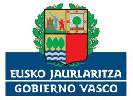“The‘ receptive city ’is an evolution of the smart city, with a fundamental difference: citizens go from being at the center of observation to becoming the center of action,” Schmitt emphasizes.
The essence of this concept, he explains, is to develop “a city made of and for its citizens” both in its planning and design and in the management of the city. That is to say, that "it is in the hands of its citizens", who use intelligent technology to carry it out.
If the first smart cities were driven from technology, from the large amounts of data collected from sensors, with the development of technologies such as the internet of things and the high degree of penetration of smartphones, the citizens of the so-called 'city receptive 'take the initiative to generate and share data, report incidents, submit suggestions ...
The ability and willingness of citizens to commit and act become the pillar of a receptive city. ” Cities like Zurich, Vienna, Copenhagen or Barcelona are already role models in adopting this “receptive” approach.
In fact, some small cities, and even Swiss villages, which have been actively molded by their citizens for centuries, can be considered prototypes of this concept of "receptive city."




































